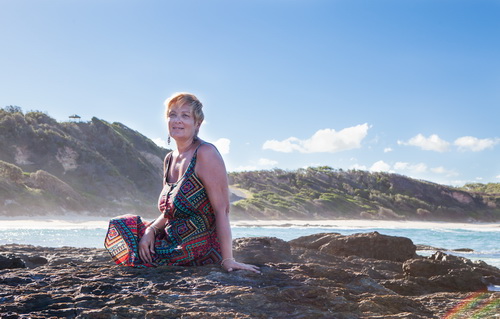
Annie Seaton, bestselling author of Kakadu Sunset, lives near the beach on the mid-north coast of New South Wales. Her career and studies have spanned the education sector for most of her working life, with the completion of a Masters Degree in Education, and working as an academic research librarian, a high school principal and a university tutor until she took up a full-time writing career. She is now internationally published in ebooks across the romance genre, and in 2014 was voted Australian Author of the Year by romance readers in the AusRomToday.com Readers' Choice Awards. Each winter Annie and her husband leave the beach to roam the remote areas of Australia for story ideas and research.
Annie's newest book, Daintree is about to hit the bookshelves, just in time for the Christmas holidays. I’m delighted to have the chance to chat with Annie today.
1. Daintree is characterised by a richness of local detail. If I didn’t know better, I’d assume you had lived in Dalrymple all your life. How do you go about creating such an authentic and evocative setting?
Researching a book in the actual environment and living in that setting for a few weeks is essential to me as an author. I am fortunate to write full time, and each winter, am able to travel with my husband to camp and live in the settings that I will use in future books. This enables me to describe my book landscapes in great detail. You can evoke the atmosphere so much more realistically if you have spent time there: the unique fragrances, the feel of the wind on your skin, and the sound of the birds, the waves or the desert wind. The actual essence of a setting is how you experience and feel it through your five senses. Sights, sounds, smells, tastes and touch written well and woven through your character’s perceptions, assist the reader to believe they are there in the story themselves.
A brief excerpt from Daintree is below. Can you smell the pub?
The graceful old building sprawled on the corner on the northern edge of town overlooking the single track railway line where the sugar cane trains chuffed past on their way to the sugar mill west of town. The familiar mix of sweat, spilt beer and stale cigarette smoke— absorbed for years by the timber and the threadbare carpet in the days before it was illegal to smoke in Aussie pubs— hit her like a solid wall. The sour smell mixed with the sweet aroma of sugar cane coming from the skin and clothes of the cane harvesters.
2. Like Kakadu Sunset, Daintree is a novel which blends disparate elements – mystery, romance and environmental issues. How difficult is it to integrate those threads?
Integrating the threads of a story is one of the best parts of a writing journey for me. I don’t use any software, or paper planning tools, or whiteboards or charts. I think about my story and the various themes that I want to present, and let it all come together in my thoughts over a period of weeks. Somehow the magic of writing delivers each time, and the story melds together as my fingers hit the keyboard. In Daintree, there is suspense, romance, environmental issues as well as the trauma experienced by health care workers and a little bit of alternative medicine too!
3. Your female protagonist, Dr Ellie Porter has a passion for holistic medicine and bush remedies. Do you have a particular interest in these areas?
I have always been interested in holistic medicine. In my early career years, I was employed as an information officer in a medical faculty that delivered an innovative course in medical training for doctors, and my interest in holistic medicine was born. As we explored the Australian outback, my interest in aboriginal culture and the facets that make it unique has been intense, and bush medicine is a part of that learning journey for me.
4. So far, we’ve met two of the Porter Sisters, Ellie and Emma, and I look forward to getting to know Dru in the final book of the trilogy. Did you know from the outset how their stories would unfold?
The only plan I had in place for the subsequent stories were the professions of the sisters – Emma, a doctor, and Dru, an engineer. The settings were also driven by our travels over the past four winters. Emma ended up in the Daintree Rainforest, and Book 3, yet to be titled, will be the story of Dru’s experiences in a diamond mine in the east Kimberley region of Western Australia. Her story is almost complete and is about to wing its way to my editor.
5. And finally, if Daintree were to be made into a film and you were the casting director, which actors would you choose to play Dr Emma Porter and Dr Jeremy Langford?
Oh, that is such a hard question for me! I watch very little television or movies, and my favourites are all golden oldies. So . . . let me think.
I would choose Australian actors and I can visualise David Wenham as Jeremy, and Claudia Karvan as Emma.
Thank you, Annie, for taking the time to answer my questions today.
You can read my review of Daintree here.
Daintree is published by Pan Macmillan Australia and is available from all good bookshops.
Deborah O'Brien,
29 November 2016
